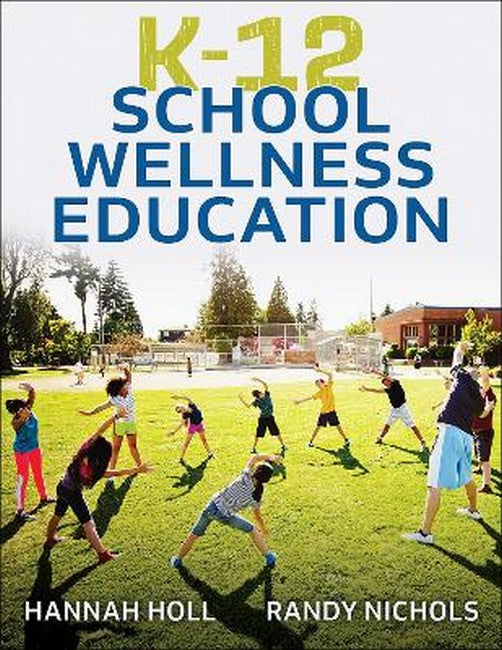Hannah Holl, EdD, is a professor at Slippery Rock University and the coordinator of the school wellness education program. An advocate for improving well-being in K-12 schools through the School Wellness Education (SWE) model, she has presented on this topic several times at the national level. She serves as the director of a project-funded by a grant from the Pennsylvania Department of Health-that provides training on the School Wellness Education model to in-service public school health and physical education teachers. In 2017, Holl was the lead author of an article published in the Journal of Physical Education, Recreation and Dance (JOPERD) titled "Preparing Physical and Health Education Teacher Candidates to Create a Culture of Wellness in Schools: New Curriculum, New Message." She also coauthored a chapter in the book Physical Best and was asked to serve as an expert writer in a position statement released by SHAPE America-Society of Health and Physical Educators on the Whole School, Whole Community, Whole Child (WSCC) model. Randy Nichols, EdD, is a professor in the physical and health education department at Slippery Rock University. Nichols earned his doctorate in physical education teacher education from West Virginia University and has more than 30 years of teaching experience. He has presented and published on numerous topics in the field of health, wellness, and physical education. Contributing Author (Chapter 8) Patricia Kardambikis, PhD, is an assistant professor at Robert Morris University, where she is the coordinator of the principal certification program. She has worked in public education for 30 years, with her last position as an assistant superintendent at Slippery Rock Area School District. Kardambikis holds a doctorate in curriculum and instruction from Kent State University, a master's degree in health education from Penn State University, and a bachelor of science degree in nursing from Carlow University. While pursuing her master's degree, Kardambikis obtained the Certified Health Education Specialist (CHES) credential. In addition, she received her principal certification and superintendent letter of eligibility from Westminster College. She has presented at national, regional, and local conferences on wellness, social and emotional learning, leadership, curriculum development, and poverty.
Request Academic Copy
Please copy the ISBN for submitting review copy form
Description
Chapter 1. Well-Being Through Physical Education Lead With Why Acknowledge the Current State of Well-Being in Society Shift to Individualized Education and Learning Provide Something Needed by Society Become an Effective School Wellness Educator Chapter 2. School Wellness Education Model Whole School Living Well Self-Empowerment Chapter 3. Unit Planning Create a Program Goal Statement Utilize a Backward Design Approach Plan the Unit Storyboard Chapter 4. Lesson Planning Part 1: Establish the Lesson Goal Statement and Scope Part 2: Plan the Resources, Steps and Sequences, and Assessment Part 3: Design the Living Well Moment Part 4: Plan the Physical Activity Education Delivery Part 5: Set the Closure and Assessment Components Chapter 5. School Wellness Education at the Elementary Level Whole School Connections Living Well Focus Self-Empowerment Strategies Lesson Planning Chapter 6. School Wellness Education at the Middle School Level Whole School Connections Living Well Focus Self-Empowerment Strategies Lesson Planning Chapter 7. School Wellness Education at the High School Level Whole School Connections Living Well Focus Self-Empowerment Strategies Lesson Planning Chapter 8. Creating a Well Future Patricia Kardambikis, PhD The Administrator's Role in School Wellness Education Strategies for Creating School Wellness Policies and Programs School Wellness Committee Leadership and Controversy Case Studies Chapter 9. School Wellness Education Success Stories Chapter 10. School Wellness Education Leadership and Partnerships Appendix A. The Five Components of Living Well by Grade Level Appendix B. Unit Storyboards

